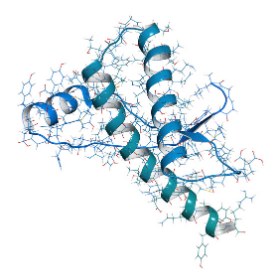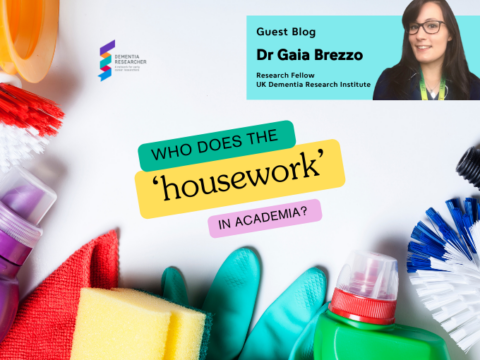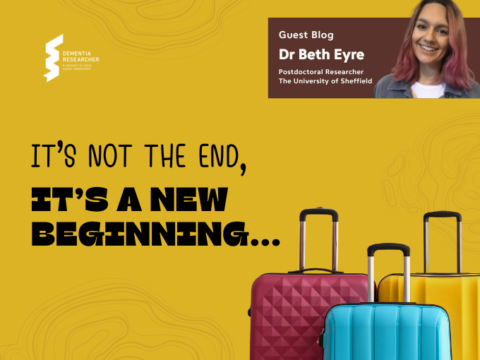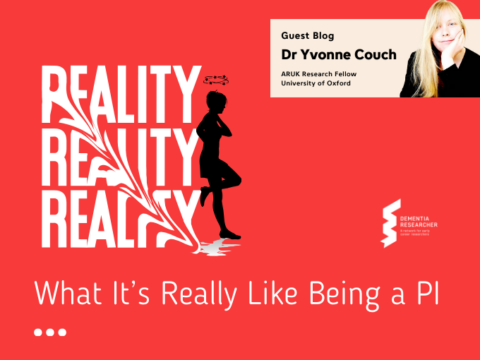As we enter into 2021, the global dementia research machine keeps pushing forward. There will likely be multiple promising findings and numerous therapies will probably enter clinical trials. Danish pharmaceutical company Novo Nordisk are one such example as they move into phase 3 clinical trials with their diabetes drug semaglutide. Evidence suggests the drug can reduce the rate of developing Alzheimer’s disease by 53%. Nobody knows if the therapy will clear clinical trials and gain approval. It all depends on the data that is obtained and interpreting it correctly. It is all about the evidence.
Science operates under a single core principle. Nothing can ever be “proven”. That is why we have titles like “the big bang theory” or “the theory of evolution”. Proof implies you are 100% certain that something is true but, in science, we know that can never been the case. In the words of the philosopher Tommy Lee Jones in the movie, Men in Black:

1500 year ago scientists believe the Earth was flat
“1500 years ago, everybody ‘knew’ that the earth was the centre of the universe. 500 years ago, everybody ‘knew’ that the earth was flat. And 15 minutes ago, you ‘knew’ that humans were alone on this planet. Imagine what you’ll ‘know’ tomorrow”
The goal of science is to pursue knowledge and understanding of the natural and social world. To do so, scientists follow a rigorous and systematic methodology based on one thing; evidence. Evidence and proof are two very different things and it is important to distinguish between the two. If you are reading this and you are starting a career in science (a PhD student perhaps), be very careful with the word proof when you report data. In fact, outright avoid using it. The purpose of science is to propose a theory, collect data surrounding that theory and then present the evidence for it. There will likely people that disagree with your theory but it ultimately comes down to where the weight of the evidence lies.
This might sound like a strange principle for science to operate under. We often view science as having the answers to so many of our questions but it is important to keep the scientific endeavour open for new updates. If we accept something as proven, we cannot then counteract it with new evidence. Keeping the debate open, however, always leaves the window open for improvements and new ideas.
Let me give you an example from the world of Alzheimer’s research. For starters, if we accepted the idea of proof we would not know anything about the disease today. In medieval times, people with dementia were often thought to be possessed by spirits and were often exorcised, locked away or even killed. In the 1800s, dementia was a common reason to be admitted to an asylum and often thought to be a part of getting old. The idea that you “just go a bit mad in your old age” was commonplace. It wasn’t until the late 19th and early 20th century when the likes of Arnold Pick, Frederic Lewy and Alois Alzheimer presented new evidence suggesting dementia was a neurological disease that opinions started to change. If science wasn’t open to being updated, we might still be admitting patients to Bedlam instead of making the huge progress we have in the search for treatments.
How about a newer example in the field of dementia research? In recent years a lot of buzz has been generated around the idea that Alzheimer’s might be a prion disease and could, therefore, be transmissible. Prion diseases are caused by infectious, misfolded proteins (called prions) that spread by convincing “normal” forms of the same protein to misfold and malfunction. Prions are unique in their stability too because, unlike most proteins, high heat does not destroy them nor does ionising radiation, formaldehyde or hitting them with proteases (enzymes that digest proteins). They are hearty little buggers and quite capable of causing sever disease.

A prion is a type of protein that can trigger normal proteins in the brain to fold abnormally.
The most well-known example is probably bovine spongiform encephalopathy (mad cow disease) where prions present in infected beef spread into the brains of anyone who consumed it and caused severe damage. Now it seems there may be some evidence that Alzheimer’s disease (AD) can propagate via a similar mechanism. According to research from UC San Francisco, two key proteins in AD (amyloid beta and tau) appear to act in a similar way to prions. So what is the evidence?
Between 1958 and 1985, it is estimated that around 30,000 people worldwide received injections of human growth hormone to treat growth problems. The hormone was derived from cadavers and sometimes extracted from post-mortem brains. Within that group of ~30,000 people, a small proportion went on to develop amyloid beta plaques in middle age, many years before you would expect to see it in an AD patient with a genetic disorder. Building on this, the group conducted further experiments to see if tau and amyloid beta can spread and propagate like prions and concluded that it could explain cases where patients die of AD at a young age. It could be possible that some of the patients that received growth hormone injections also were inadvertently injected with amyloid and tau and those two proteins spread in a prion-like manner, kick-starting disease progression.
This then brings us back to the very first point. What do we do with this information? As always we are looking at evidence and not proof and as with any scientific discovery, the validity of this is hotly debated. The last thing we should do is drop everything and run with the idea that Alzheimer’s is definitely a prion disease; discarding everything else we have learned. What we can do, however, is update our understanding of the science behind this disease. We can bring it into the debate and have it represent another avenue of exploration as we try to pick apart, understand and address the scientific basis of AD as we drive forward to a cure. Science isn’t about focussing solely on one idea. It’s all about the bigger picture. Evidence, not proof, is what drives us forward. Proof restricts the scientific endeavour because if we can prove everything, we may as well stop looking. Then who knows what we will miss?
Author

Dr Sam Moxon
Dr Sam Moxon is a biomaterials scientist, and his expertise falls on the interface between biology and engineering. His PhD focussed on regenerative medicine and he now works on trying to improve on culture techniques for human stem cells, so that we can gain a better understanding of how diseases like Alzheimer’s manifest. His work at The University of Manchester looks at 3D bioprinting with stem cells. Outside of the labhe hikes through the Lake District and is an exert on all things Disney.
What exciting developments do you expect your own field of research this year? Let us know in the box below.

 Print This Post
Print This Post




